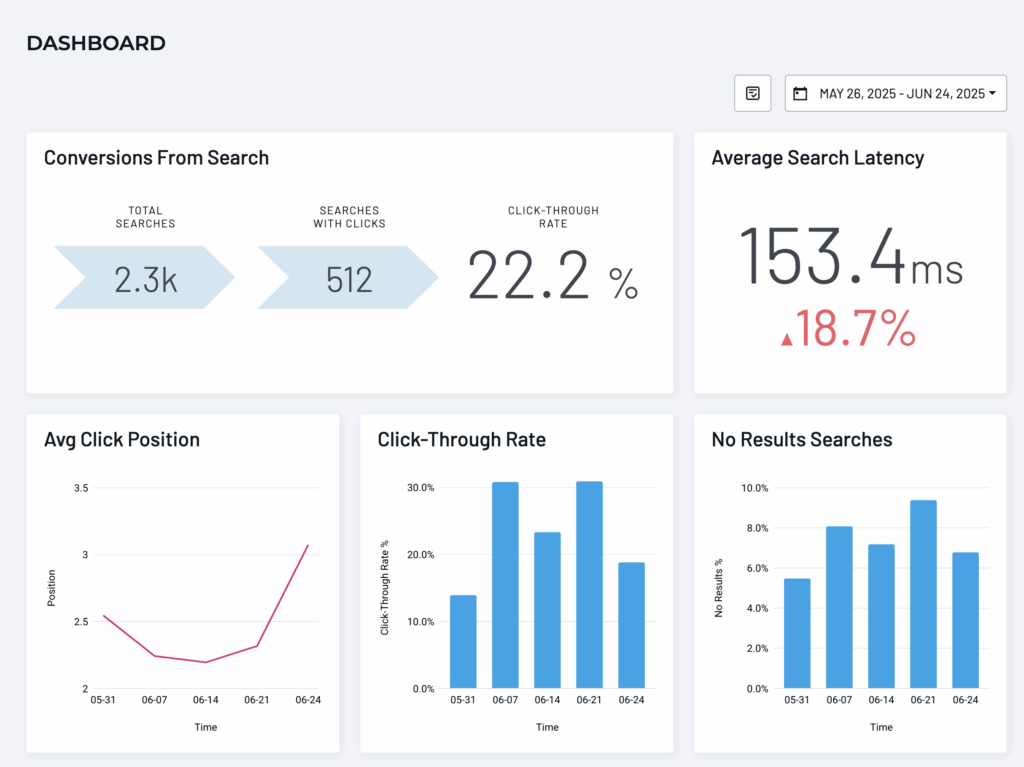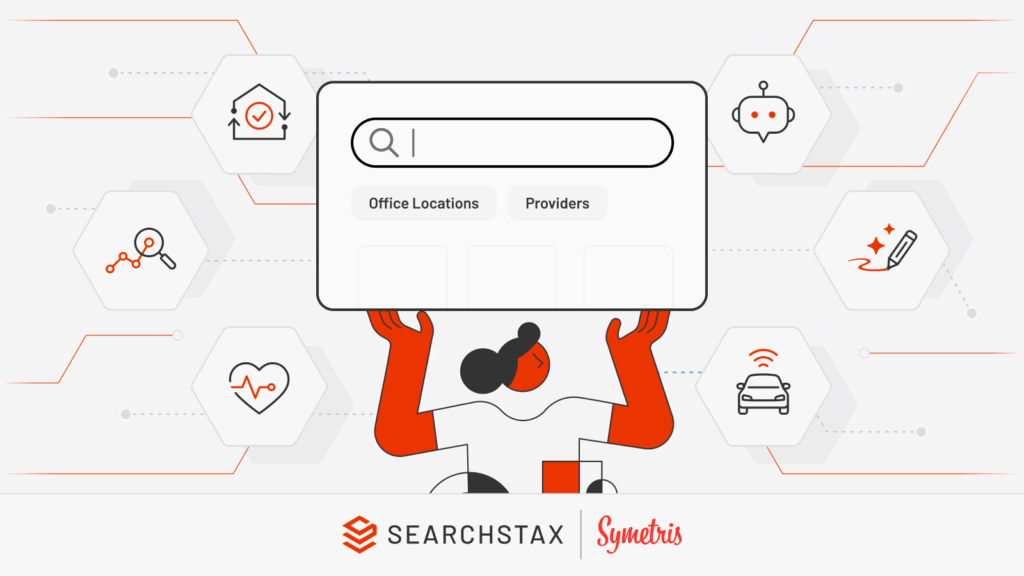October 07, 2025
Chris Pace
|
After leading digital marketing at one of the country’s largest health systems, I’ve seen firsthand how broken the patient journey can be. When I moved to SearchStax, one thing became clear: search isn’t just a feature. It’s the front door to care.
If most patients start their journey on Google, your website’s search box deserves the same importance as your homepage. Unfortunately, many healthcare organizations still treat search as an afterthought.
I discussed this and more on a recent podcast with our friends over at Symetris. Here are 10 quickfire thoughts and takeaways from the session that I think are key for anyone trying to solve the healthcare digital experience.
1. Onsite Search is Still an Afterthought
Healthcare websites often look polished with well-designed pages, rich content and helpful tools. But the onsite search experience behind them is usually fragmented and frustrating for patients.
Patients bounce between doctor finders, location finders, class and event calendars, billing tools and job boards. Each feels like a disconnected detour. On mobile, the problem only grows. Patients expect to tap the magnifying glass, ask their question and get a clear answer. When they don’t, they leave or pick up the phone.
2. Make the Search Box the Unifier
A unified site search (omni-search) consolidates providers, locations, services, events and support content into a single results page.
Instead of a query like “pediatrician near me” leading to irrelevant links, unified search surfaces provider profiles, nearby locations and scheduling options in one place.
Consistency is not just convenience. In healthcare, it builds trust. Patients should never feel unsure if they are still on your site.
3. Facets, Intent and Relevance
The best search experiences:
- Categorize clearly: Results clearly categorized (Providers, Locations, Services, Resources).
- Honor consumer-friendly language: Terms like “foot doctor” should lead to “podiatrist.”
- Tune for relevance: Avoid dead ends and zero-result searches.
If Google can return meaningful results in seconds, patients should (and will) expect the same from healthcare organizations they trust.
4. Your Results Page is Your Homepage
Fewer visitors hit your homepage than you think. Many arrive through organic search, then immediately use your internal search box.
That makes your results page one of the highest-value surfaces on your site. It deserves the same attention as your flagship landing pages. With promoted results, it can even act like your own internal ad space, surfacing flu shot campaigns, RSV clinics or events without IT tickets or heavy development work.
5. Put Marketers in Control
Marketers understand patients and campaigns better than anyone. Modern site search platforms let marketing teams manage synonyms, tune relevance and launch promoted results without waiting on IT.
This empowers marketing leaders to really own a sense of marketing agility and make these practical tweaks to search that make a huge impact on the visitor experience – all without IT tickets or heavy development work.
Deployments take weeks, not months and integrate seamlessly with your existing design. That agility transforms search from a technical bottleneck into a marketing growth driver.
6. The Hidden ROI: Reducing Calls
When search fails, patients call. Every unnecessary call costs money and risks losing a patient. That’s a downstream cost that compounds over time, dragging down a health system’s bottomline.
Smarter search deflects those low-value calls, keeps patients in self-service mode and frees call centers to focus on the issues that matter most.
7. Follow the Site Search Data
Search analytics are a goldmine for marketers:
- Zero-result queries reveal where content is missing and give you a roadmap for fixes.
- Top search terms expose demand signals that inform growth, service line strategy and access planning.
This turns search from a website tool into a strategic asset for the entire organization. When you’re equipped with that kind of first-party data, with visitors typing exactly what they are looking for into your search bar, you have a major advantage in delivering a better overall website experience compared to your competitors.
8. Employ a 30-60 Day Plan
Having access to search data and insights is just the first step; you need to create a structured plan over the course of one to two months.
Here’s how to get traction in your first 30–60 days:
- Baseline search usage and zero-result rate.
- Elevate search placement on key pages.
- Consolidate providers, locations, services and events into one search.
- Empower marketing to promote seasonal or urgent campaigns.
- Fix no-results queries with synonyms and consumer-friendly terms.
- Set up dashboards to monitor analytics and keep tuning.

9. AI with Guardrails
AI is making search smarter, summarizing results, detecting intent and shortening the path to care. But in healthcare, it’s essential that you deploy it carefully to protect trust and accuracy.
You don’t have to wait for future AI breakthroughs—SearchStax Smart Answers is already helping health systems surface relevant info quickly and safely. Start by unifying it, then add AI where it makes the journey faster and safer. When in doubt, lean on the practical approach to AI, where AI is efficient, accessible and empowering to human expertise.
10. Treat Search Like a Product
For healthcare marketers, the mandate is clear: stop treating search like a utility. Treat your onsite search like a product.
Search is where intent is revealed, trust is built and patients connect to care. When you own it, you can create faster, simpler and more cost-effective experiences.
If you want to check out the full podcast, hop over to Symetris to watch the full episode!




